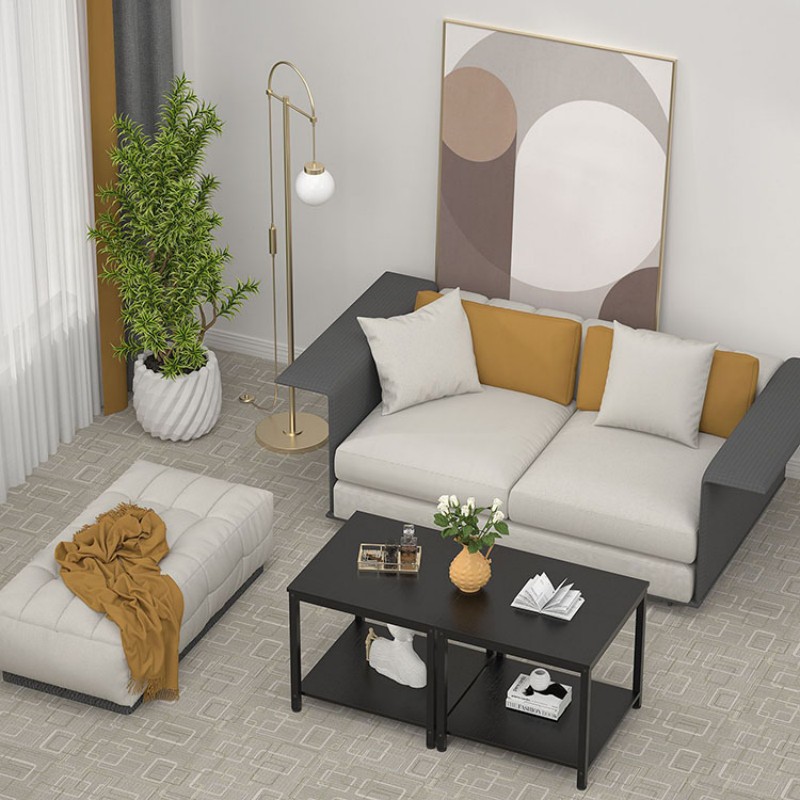How to Choose a Coffee Table Size
Selecting the right Coffee Table is a crucial step in designing a functional and harmonious living space. While style and material are important, size is the fundamental factor that determines whether the Table will integrate seamlessly into your room. An incorrectly sized table can disrupt traffic flow, feel disconnected from seating, or simply overwhelm the space. This guide provides a structured approach to choosing the optimal coffee table dimensions for your layout.
1. Proportion to Seating Area
The coffee table should relate directly to your primary sofa or seating arrangement.
Length: As a general rule, the table's length should be approximately two-thirds the length of your sofa. This creates a balanced visual proportion without appearing too small or excessively large.
Placement: Maintain a distance of 12 to 18 inches (30 to 45 cm) between the edge of the coffee table and your sofa. This provides sufficient legroom while keeping the table within easy reach for placing drinks or books.
Clearance from other furniture: If placed within a conversation area involving chairs or other sofas, ensure at least 18 inches (45 cm) of walking space between the coffee table and other pieces to maintain a comfortable traffic flow.
2. Height Considerations
The height of the coffee table should complement the seat height of your surrounding furniture.
Standard Height: The most common and ergonomic height for a coffee table is level with, or 1-2 inches lower than, the seat cushions of your sofa. This allows for comfortable use without requiring one to reach up or down excessively.
Low-Profile Options: Very low tables can create a modern, relaxed aesthetic but may be less practical for daily use. Ensure they are not so low that retrieving items becomes a strain.
Multi-Level Designs: Tables with a lower shelf can offer valuable storage for items not in constant use, helping to maintain a tidy surface.
3. Factor in Room Size and Shape
The overall dimensions of your room will guide the appropriate scale of your coffee table.
Large Rooms: In a spacious living area, a larger coffee table or a cluster of smaller tables (often called a "nest") can adequately fill the space and serve multiple seating positions.
Small Rooms: Opt for a table with a smaller footprint or a space-saving shape like an oval or round table, which allows for easier movement around it. A table with a raised, open base can also create a feeling of more space than a solid, heavy design.
Oval and Round Tables: These shapes are excellent for maximizing space in narrow rooms as they eliminate sharp corners, improving safety and circulation.

4. Functionality and Use
Consider how you plan to use the table, as this will influence the required surface area.
Entertaining: If you frequently host guests or use the table for serving food and drinks, a larger surface area is advisable.
Storage Needs: For those requiring storage for remotes, magazines, or blankets, ensure the table you choose has the appropriate shelf, drawer, or compartment space without compromising the overall proportions.
Flexibility: In dynamic spaces, consider alternatives like a group of smaller stools, a trio of nesting tables, or a large, sturdy tray placed on an ottoman. These offer surface area when needed and can be tucked away to free up floor space.
5. Visual Weight and Material
The perceived size of a table is affected by its material and design, known as its "visual weight."
A glass-top table or one with slender, metal legs will feel less imposing and occupy less visual space than a solid wood table of the exact same dimensions.
If your room feels crowded, choosing a design with a lighter visual weight can achieve the functionality you need without contributing to a cluttered feel.
Final Measurement Checklist:
Before purchasing, always:
Measure the length of your sofa.
Tape out the proposed table's dimensions on your floor using painter's tape to visualize the space it will occupy.
Verify clear pathways for walking around the entire seating area.
By carefully considering these factors—proportion, height, room size, and function—you can select a coffee table that serves as a practical and stylish centerpiece for your living room for years to come.

